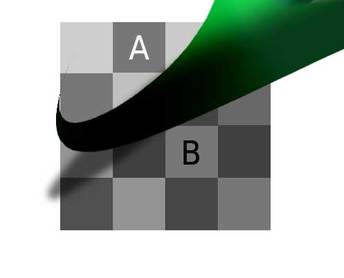|
The Internet has recently been all a-buzz about The Dress – is it gold and white or blue and black? There has been much debate on why no one agrees on the color.
Today there are many online color calculators that make finding complimentary colors really easy - unlike how the artists in the 1960's had to manually do so. Seeing color involves making comparisons. To see color, the brain must compare the input from different kinds of cone receptors in the eye, and then make many other comparisons. The key to color constancy is that we don’t determine the color of an object in isolation. Rather, we interpret an object’s color by comparing it to the colors that surround it. So for example, the color yellow can appear brighter if it is surrounded by dark pink. The same yellow can appear to have an orange hue if thin yellow stripes are within close and equal proximity to thin pink stripes. Thus, our interpretation of a color isn’t always accurate unless we examine each color in isolation. Of course there are other things to consider when interpreting color, such as the health of one’s eye, the lighting in which we view an object and what the brain had learned as being a reference point. So in the end, it’s not about the dress, it’s about the science - and the art. This week's illustration is based on the fabric of the infamous dress, op-art, complementary colors and patterns. It is all digital. If you liked this blog post, you may also like: Comments are closed.
|
Categories
All
|
Privacy policy
Copyright 2024 Patricia Pinsk


